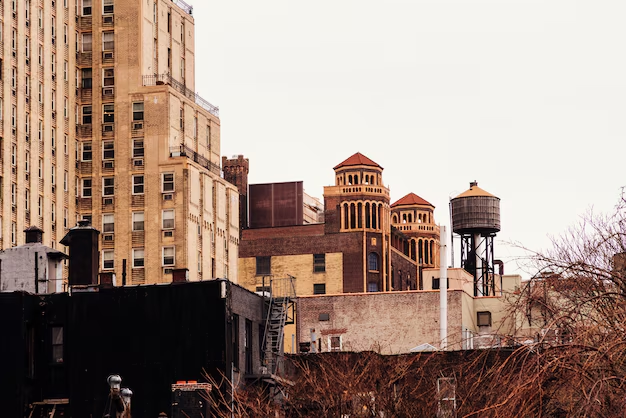Branam Drive Portland Oregon History: A Journey Of Evolution
Branam Drive Portland Oregon History: Braham Drive is a vital road in the heart of Portland. It connects neighborhoods and facilitates the movement of people and commerce. Over the years, the area has transformed significantly. It now features a blend of dynamic businesses and stylish residential developments that rejuvenate the landscape. Despite these modern changes, Branam Drive still reflects the rich industrial heritage that shaped Portland’s identity.
This road represents Portland’s journey from industrial roots to a contemporary urban center. It embodies the city’s commitment to sustainable growth. Green spaces and eco-friendly initiatives integrate seamlessly with well-preserved historical structures. In this way, Branam Drive showcases the vibrant energy of today’s Portland while honoring its past, creating a unique blend of history and progress
Read also: Alexander Uzoka Fraud:A Cautionary Story for Investors
Early Beginnings: Branam Drive Portland Oregon History
In the early 1800s, the area now known as Portland was a small settlement. Native American tribes, like the Chinook and Clackamas, originally lived here. The Willamette River made the area an ideal spot for trade and travel.
Portland’s growth began when settlers like Francis W. Pettygrove and Asa Lovejoy saw the potential of the site. They chose it as the foundation for Portland, which was officially founded in 1845. The area quickly grew into a thriving port town.
Branam Drive’s Role in Early Urbanization
As the city grew, roads like Branam Drive became essential. In the late 1800s, Portland’s economy expanded, thanks to industries like logging and shipbuilding. Branam Drive, once a dirt road, became a key route connecting the city’s eastern neighborhoods with its core.
In the early 20th century, Portland experienced significant development. The construction of bridges such as the Steel Bridge and Hawthorne Bridge linked Portland’s east and west sides. Branam Drive, located near the city’s industrial centers, saw more traffic and became vital for both workers and businesses.
The Early 20th Century: A Time of Expansion
In the early 1900s, Portland became a hub for industry and commerce. As the city grew, infrastructure like roads and bridges were essential. Branam Drive was one of these critical routes.
During this time, Portland’s population increased. With the expansion of the railroad, people moved to the city for work. Branam Drive connected industrial areas to the city center, making it an important thoroughfare for workers commuting to factories.
Branam Drive Portland Oregon History : Post-War Growth and Suburbanization
After World War II, Portland, like many American cities, experienced rapid suburbanization. The city’s expansion required new infrastructure, and Branam Drive was widened to accommodate the growing population.
During the post-war boom, the area around Branam Drive became residential. New housing developments attracted families, and the eastern side of Portland became a desirable place to live. With more cars on the road, Branam Drive became a key route for commuters.
Late 20th Century: Industrial Decline and Urban Renewal
By the 1970s and 1980s, Portland, like many cities, faced urban decay. Industrial jobs declined, and areas like Branam Drive, once bustling with factories, became neglected.
However, the city embarked on a process of urban renewal in the 1980s. The goal was to revitalize neighborhoods, including those near Branam Drive. Old warehouses were transformed into lofts, and the area saw a resurgence in both residential and commercial developments.
Portland Today: A Blend of Old and New
Branam Drive stands as a crucial artery in the heart of Portland, connecting neighborhoods and facilitating the flow of people and commerce. Over the years, the area has transformed dramatically, featuring a blend of fresh, dynamic businesses alongside stylish residential developments that breathe new life into the landscape. Despite these modern advancements, however, Branam Drive still bears witness to the rich, industrial heritage that shaped Portland’s identity.
This thoroughfare is, in fact, a testament to Portland’s journey from its industrial roots to a contemporary and thriving urban center. It captures the essence of the city’s commitment to sustainable growth, as green spaces and eco-friendly initiatives intertwine seamlessly with well-preserved historical structures. In this way, Branam Drive not only showcases the vibrant energy of today’s Portland but also honors the legacy of its past, ultimately creating a unique tapestry of history and progress.
Conclusion: A Symbol of Portland’s Growth Branam Drive Portland Oregon History
Branam Drive has been a vital artery in the vibrant tapestry of Portland’s history. What began as a modest trading post has, over time, blossomed into a thriving industrial hub, bearing witness to the city’s remarkable growth and transformation. As it meanders through the changing landscape, it echoes stories of commerce, community, and innovation.
Today, Branam Drive stands not just as a road, but as a symbol of Portland’s remarkable ability to adapt while honoring its rich heritage. Moreover, its presence serves as a bridge connecting the past with the present, reminding residents and visitors alike of the city’s enduring spirit. As Portland continues to evolve in the face of modern challenges, Branam Drive remains, without a doubt, an important reminder of its historical roots. Ultimately, it stands as a testament to the resilience and dynamism of the city.






